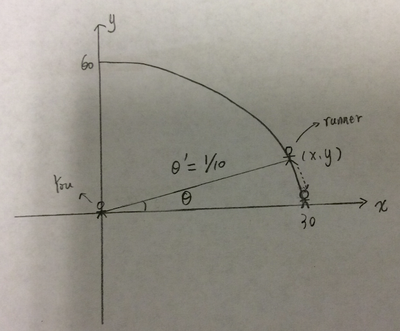Science:Math Exam Resources/Courses/MATH102/December 2014/Question B 07
{{#incat:MER QGQ flag|{{#incat:MER QGH flag|{{#incat:MER QGS flag|}}}}}}
• QA 1 • QA 2 • QA 3 • QA 4 • QA 5 • QA 6 • QA 7 • QA 8 • QB 1 • QB 2 • QB 3 • QB 4 • QB 5 • QB 6 • QB 7 • QC 1 • QC 2(a) • QC 2(b) • QC 2(c) • QC 2(d) • QC 3 •
Question B 07 |
|---|
|
A runner on an elliptical track described by the equation runs at a constant speed where and are measured in metres. Standing at the origin, you must rotate your head at 1/10 radians per second to watch her as she crosses the finish line located on the x axis. How fast is she running? |
|
Make sure you understand the problem fully: What is the question asking you to do? Are there specific conditions or constraints that you should take note of? How will you know if your answer is correct from your work only? Can you rephrase the question in your own words in a way that makes sense to you? |
|
If you are stuck, check the hints below. Read the first one and consider it for a while. Does it give you a new idea on how to approach the problem? If so, try it! If after a while you are still stuck, go for the next hint. |
Hint 1 |
|---|
|
Set the angle between the line which connects the runner and the origin and the positive x-axis to be , then if the runner is at location , we have . We know , so we can use implicit differentiation to relate with and . |
Hint 2 |
|---|
|
When the runner crosses the finish line, as the elliptical track is perpendicular to the -axis at that point. So there is no component then . |
|
Checking a solution serves two purposes: helping you if, after having used all the hints, you still are stuck on the problem; or if you have solved the problem and would like to check your work.
|
{{#incat:MER CT flag||
}}






















